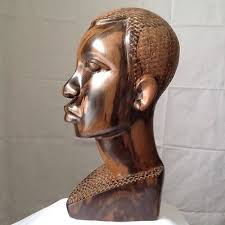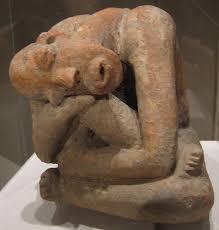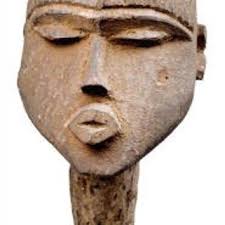Actor Antonio Banderas tests positive for coronavirus









Actor Antonio Banderas tests positive for coronavirus
Spanish actor Antonio Banderas has tested positive for coronavirus on his 60th birthday.Spanish actor Antonio Banderas has tested positive for coronavirus on his 60th birthday.
"I want to make public that today... I am forced to celebrate my 60th birthday following quarantine after having tested positive for the COVID-19 disease, caused by the coronavirus," he said on Twitter.

"I'd like to add that I'm feeling relatively well, just a bit more tired than usual, and confident that I will recover as soon as possible.
"I hope (the recommendations) allow me to overcome the infectious process that I suffer and that it is affecting so many people around the planet.
"Banderas added: "I will take advantage of this isolation to read, write, rest and continue making plans to start giving meaning to my recently released 60 years, to which I arrive full of desire and enthusiasm.Banderas, who is well known for his roles in The Mask of Zorro and Puss in Boots, spends most of his time at his home in Chobham in Surrey.
He is the latest Hollywood star to announce they have tested positive for coronavirus, after the likes of Tom Hanks and Idris Elba.
Reference: Sky News: 2 hrs ago: 10th August 2020Reference: Sky News: 2 hrs ago: 10th August 2020
Over 100 Americans died after taking hydroxychloroquine for COVID-19











Over 100 Americans died after taking hydroxychloroquine for COVID-19
More than 100 Americans have died after taking hydroxychloroquine in a misguided effort to treat or prevent coronavirus so far this year, a new report reveals.More than 100 Americans have died after taking hydroxychloroquine in a misguided effort to treat or prevent coronavirus so far this year, a new report reveals.In the first six months of 293 people died after taking hydroxychloroquine, according to the Milwaukee Journal Sentinel's review of the Food and Drug
Administration's (FDA) adverse events reporting system. That's compared to just 75 in the first half of 2019. Much like public health experts use the number of 'excess' deaths to estimate how many people died of coronavirus but have not yet been counted, the Sentinel looked at data on those other 218 deaths.
The reason 'more than half' of those people had been taking hydroxychloroquine or chloroquine was COVID-19. It comes after the overwhelming majority of big, credible studies on using the malaria drug to treat coronavirus showed - despite Trump's repeated optimism over it - that it offered no benefit to people with the viral infection. Some of those studies were even stopped short due to concerns over its potential to cause fatal heart arrhythmias, or after the group given the drug began dying at higher rates than those given just supportive care.

When early studies suggested that hydroxychloroquine might have antiviral effects and improve recovery and survival odds for infected people, President Trump raved that it was safe - a conclusion he drew based on the fact that the drug is FDA-approved. 'What do you have to lose?' Trump asked as he encouraged the us of hydroxychloroquine to treat coronavirus. The drug is indeed approved by the regulatory body to treat the mosquito-borne disease malaria and autoimmune diseases like lupus and rheumatoid arthritis.
o get that seal of approval, it did go through rigorous safety testing, but it also comes with a warning that it can cause heart arrhythmias that might be virtually unnoticeable in some, but lead to severe heart dysfunction and even death in others. People with heart disease are also at greater risk of getting severely ill from or dying of COVID-19. Donald Trump wearing a suit and tie: President Trump has urged people to try hydroxychloroquine to treat coronavirus, asking 'what do you have to lose' (file)© Provided by Daily Mail President Trump has urged people to try hydroxychloroquine to treat coronavirus, asking 'what do you have to lose' (file)Brett Giroir wearing a suit and tie: On Sunday, Admiral
Brett Giroir said on Meet the Press that he 'can't recommend' taking hydroxychloroquine for coronavirus treatment or prevention© Provided by Daily Mail On Sunday, Admiral Brett Giroir said on Meet the Press that he 'can't recommend' taking hydroxychloroquine for coronavirus treatment or preventionDoctors may not prescribe hydroxychloroquine, even for its approved uses, to people with pre-existing heart conditions. But after Trump's endorsement, doctors began prescribing it left and right.
The number of hydroxychloroquine prescriptions filled in one week in March was more than 2,000 percent higher than fills for the same drug a year prior. As more studies warned of the alarming arrhythmias seen in trial participants treated with the drug and suspiciously high death rates, the FDA issued a warning that the drug should only be used to experimentally treat COVID-19 under the close supervision of a doctor. By June, the agency revoked its emergency use authorization for hydroxychloroquine to treat coronavirus altogether.
But it may not have been enough to stop the drug from being used inappropriately, and with potentially deadly consequences. Between January and June of 2020, there were 6,588 adverse events related to the drug reported to the FDA, and 6,223 of them 'serious' meaning they could left the epson hospitalized, disabled or dead.
That was about twice as many total adverse events as were reported in conjunction with the drug in 2019, and nearly three times as many 'serious' adve
rse events. In recent weeks, three of the most prominent members of Trump's own task force - Dr Deborah Birx, Dr
Anthony Fauci and Admiral Brett Giroir - have warned against the use of hydroxychloroquine to treat coronavirus. But the drug needs to remain on the market.
It's an important preventive and treatment for malaria, and the only drug that brings relief for some lupus patients. So long as it is approved for these uses, doctors can prescribe hydroxychloroquine to people with COVID-19, however inadvisable that may be.
If patients continue to be given the unproven drug to treat coronavirus, an excess of dangerous side effects or deaths linked to it seems doomed to persist, so it will be in the hands of providers to protect their patients.
'Everyone tested positive': Covid devastates agriculture workers in California's heartland










Everyone tested positive': Covid devastates agriculture workers in California's heartland'
Across California’s Central Valley, hundreds of thousands of workers wash the vegetables, debone the meat, sort the nuts and package the produce that finds its way into kitchens throughout the United States.Across California’s Central Valley, hundreds of thousands of workers wash the vegetables, debone the meat, sort the nuts and package the produce that finds its way into kitchens throughout the United States.
When the coronavirus hit, their work was ruled essential, so they kept working in the often cramped facilities that fuel a state industry that exports $21bn in agricultural products each year. Workers told the Guardian that in the past months, as much of California sheltered at home, they took their places at the production lines and sorting tables, against all social distancing guidelines, as their companies made excuses for why coworker after coworker stopped
showing up for their shifts. Some workers said they had to learn from news reports that they had been exposed to Covid-19. Others said they felt obligated to work even when showing virus symptoms.Then they returned to their homes in cities across the region, unknowingly exposing their parents, their spouses, their children, aunts, uncles and cousins to the virus. Related: California’s farm workers pick America's essential produce – unprotected from coronavirus
“We felt like they would tell us. They would take precautions. But they didn’t,” said Marielos Cisneros of her former employer, the nut producer Primex Farms, when the pandemic began. “In a sense, we felt secure.”
Now the virus is surging in the Central Valley, with several reported deaths among essential workers. In 10 counties, state authorities list workplaces and businesses as likely drivers for increased transmission. In at least two more counties, outbreaks in several food processing facilities have led to hundreds of infections.
Workers and workers’ rights organizations say these outbreaks and the subsequent swell of infections in the Central Valley point to a devastating truth: that we are each only as protected as our least protected; as vulnerable as our most vulnerable. “You can appear to contain the spread among middle-class workers but when it reaches those workers who are furthest on the margins, who are most disadvantaged, the virus is going to spread,” said Edward Flores, a sociology professor at the University of California, Merced.
Fears for hundreds of thousands of workersThe Central Valley runs 450 miles down the center of California, much of it flat fields, lush fruit trees and vibrant orchards. The region contains the largest concentration of dairies in the state, as well as a number of meat-processing centers, together with the farms forming an agricultural juggernaut. In the San Joaquin Valley alone – the southern bulk of the region – more than 173,000 work in agriculture, with 45,000 more in food manufacturing, 60,600 more in grocery retail and 86,000 in transportation and warehousing, according to UC Merced’s Community and Labor Center.
In the eight counties of the San Joaquin Valley, a 27,000-square-mile area of 4.3 million residents, coronavirus cases are at 1,900 per 100,000 residents. In comparison, the San Francisco Bay Area, with 7.7 million residents in 7,000 square miles, has 770 cases per 100,000 residents.
From the beginning of the pandemic, advocacy groups expressed concern for the safety of essential food workers. Much of this work does not allow for social distancing, with workers squeezing next to each other in fields and crowding together at the plants. Many who do the low-wage labor that keeps these industries afloat are Latinx and do not speak English, making it difficult for them to communicate with their employers and understand their rights. Some are undocumented, with the fear of deportation preventing them from coming forward with any grievances.
Still, over the past five years, the federal and state occupational safety and health division has received more complaints out of the Central Valley and inspected more accidents in this region than anywhere else in the state, according to Ana Padilla, executive director of UC Merced’s Community and Labor Center. The San Joaquin Valley has 13% of the state’s meat-processing centers, but has received 49% of the state’s inspections, Padilla said.
Roxana Alvarado, 30, worked at Primex Farms in Wasco up until a few weeks ago. When she tested positive for the virus in June, dozens of her coworkers had already been infected, according to the workers and the United Farm Workers of America (UFW).
At least 151 Primex workers have tested positive for Covid-19, according to the company – more than a third of the plant’s staff. UFW, which is keeping a census of infected workers, said the first confirmed infected worker, whom the company has blamed for bringing the virus into the facility from abroad and fired, last worked on 20 May. Workers told the Guardian management held a meeting when the pandemic first took off, warning them not to travel or put themselves at higher risk for infection, but gave out little other information.
Before the outbreak, they offered no testing and told the workers they could bring masks from home if they wanted but that they weren’t mandatory. They made little effort to create social distancing. “In a typical day, an eight-hour shift, I can be in contact with 100 or more people, walking between people, going around the floor, chatting with people without masks,” said Alvarado.
Alvarado had worked at Primex for almost two years, cleaning both the facility and the produce. When people stopped showing up for their shifts, management would say they were on vacation, Alvarado said. On 23 June, the company admitted that it had 31 confirmed cases – although UFW says the real number of infections around that time was closer to 76.
By then, Alvarado had brought the virus home to Bakersfield, where she lived with her husband and two children. Her five-month-old baby tested positive.“They took away my right to choose whether to expose my family and myself to Covid when they didn’t inform us what was going on,” Alvarado said. “If I had known there was Covid, I would have made the difficult decision to not go to work because I never would have put my family at risk.”
A marginalized workforceMarielos Cisneros, 40, had worked as a sorter and then a production clerk for Primex for almost three years when she contracted a fever and went to the hospital on 10 June. She made sure human resources knew. “When I told them that I was positive, the HR lady told me not to tell anyone,” she said. “She told me to say I had a headache, that I had anything else but Covid.” Primex denies the allegation.
All four of her children got coronavirus, including a son with asthma, Cisneros said. As a single mother dependent on one paycheck, she said she would have gone to work regardless, but she would have taken more precautions had she known how prevalent the virus was at the facility. Flores and Padilla, the researchers at UC Merced, authored a study looking into the connection between low-wage work and the spread of Covid-19. They found that most counties in California with high worker distress were on the state’s coronavirus watchlist, including much of the Central Valley.
The disadvantages of this region and its workforce put them at higher risk not just for exposure to the virus, but also for unsanitary and unsafe work conditions with little freedom to advocate for themselves, Padilla said. More than 21% of workers in the region live below the poverty line and 17.9% are dependent on food stamps, according to the researchers. The region’s immigrants have the lowest rate of naturalization in the state. Most workers don’t qualify for federally guaranteed emergency leave, and if they are undocumented, they do not qualify for unemployment. From these tenuous circumstances, they go on to live in households that rank as the largest in the state.
“One lady told me that she got infected, went home and unfortunately her entire family of 16 others was there,” said Armando Elenes, UFW’s secretary-treasurer. “I’m talking her husband, her sons, her son’s wife, their kids. It went from her to 16 others.” So far, 49 adult family members of the workers at the Primex plant and 34 children have tested positive, Elenes said.
Jesse Rojas, a Primex spokesman, said the allegations by workers and UFW were “false” and “hearsay”.“The overwhelming majority of current and actual Primex employees are upset over UFW’s lies and feel entirely safe going to work, as the company has gone above and beyond to ensure their safety,” he said. He added that Primex “has been adhering to and following guidelines and recommendations by each institution at every level from the very beginning of the pandemic”, but he declined to provide details of what those guidelines were and the dates that the company put them in place.
‘Everyone has tested positive’About 60 miles north in Kings county, another outbreak swept through Central Valley Meat Co, a slaughterhouse and beef-packaging plant. Attorneys representing workers in a class-action lawsuit against the company assert that the virus arrived at the facility in Hanford in April, eventually spreading to about 200 workers.
At one point, in early May, Kings county reported that it had 158 coronavirus cases while Central Valley Meat Co reported internally that it had 161 cases, according to the lawsuit – more than 100% of the county’s total cases. “It is beyond peradventure that Central Valley Meat is responsible for the significant increase in COVID-19 cases in Kings county,” the lawsuit states.Central Valley Meat Co did not return repeated requests for comment.
The company did not put in place good social distancing guidelines, hand sanitizing stations or offer face masks until an outbreak was in full swing, according to workers and the lawsuit. Now, so many of the workers have gotten coronavirus that they’ve given up on following any guidelines, said a former deboner who asked to only be identified as Martin out of fear of losing his job. “It’s almost like the virus has passed because everyone has tested positive,” he said.
The first person infected stopped coming to work in April, and when workers asked why, management told them he had an earache, Martin, 31, said. It wasn’t until that person’s brother, who lived with him and also worked at the plant, tested positive and told their coworkers that they realized coronavirus had arrived. When Maria Pilar Ornelas, the lawsuit’s main plaintiff, began struggling to breathe at work on 23 April, she asked management if she could get tested, according to the lawsuit. They told her testing was only offered to employees “chosen by the company”, the suit said, and told her she had to finish her shift, even though she had a headache so severe that her vision became blurry. She soon developed a fever of 103.7.
Ornelas eventually paid $225 for a test because the company does not provide health insurance, the lawsuit said. By then, she had unknowingly spread the virus to her boyfriend. Martin, who has worked for the company for six years, tested positive in late April, along with another relative who lived with him. While Martin’s wife and two children did not display symptoms during their 14-day quarantine, the wife and child of Martin’s relative tested positive.
a man swinging a baseball bat on top of a dirt field: A farm worker repairs irrigation pipes during spring planting in the Central Valley in Davis, California, in 2017. Photograph: Hyungwon Kang/Reuters© Provided by The Guardian A farm worker repairs irrigation pipes during spring planting in the Central Valley in Davis, California, in 2017. Photograph: Hyungwon Kang/ReutersMartin said some of his coworkers kept working despite displaying symptoms because they were afraid to lose their jobs if they stopped. Other coworkers stopped coming into work because they were scared of getting infected, he said – enough that in May and June, the company paid workers a bonus to risk their health and come to work.
“I felt like I was being bought out,” Martin said. “It felt like they were trying to buy my life for an extra $100 a week.” A strike and state actionLast month, California officials indicated that combating the spread in the Central Valley must be a priority. The governor, Gavin Newsom, announced that he was dedicating $52m to expand contact tracing, quarantine efforts and investigations in eight counties.
Newsom has been upfront that coronavirus has harmed parts of California’s population and economy in disproportionate ways. In particular, the Latinx community and low-wage essential labor workforce have borne the brunt of the burden, with the recent rise in cases in the Central Valley making the differences strikingly clear. Related: Exclusive: the litigious debt collectors targeting Latinos during a pandemic .Padilla and Flores of UC Merced say that only more stringent policies and enforcement around workplace conditions will curb the crisis. Workplace safety and health concerns existed before Covid-19, they argue. Now, with the threat of a virus all around, the risks are potentially fatal.
Maria Hortencia Lopez, a 57-year-old Primex employee, died of Covid on 14 July. Another worker who tested positive was taken off life support last month and is not expected to survive. Pedro Zuniga, a 52-year-old produce handler at a Safeway distribution center in Tracy, died weeks after coworkers began displaying symptoms at the center. Management told the sick employees that they had to keep working, according to a lawsuit filed by Zuniga’s widow. Fifty-one workers eventually tested positive.
Teena Massingill, a spokeswoman for Albertsons Companies, which owns Safeway, said the state occupational safety and health division inspected the Tracy distribution center on 15 April – two days after Zuniga’s death – “and no violations were found”. “Prior to Mr. Zuniga falling ill, the Company had instituted enhanced cleaning practices and social distancing protocols at the facility, and was implementing health screening and temperature checks,” she said.
At Primex, employees went on strike on 25 June and 6 July to demand the company adhere to federal law that requires employers like Primex to provide paid leave for specified reasons related to Covid-19 for up to 80 hours. Workers at the company struggled to get their full 80 hours paid, workers and UFW said. Cisneros said Primex told her it counted as vacation time.
Primex workers demand the company take action to protect them from COVID19 and treat them as the essential workers they are. / Trabajadores exigen que la compañía tome accion para protegerlos del COVID19 y que los traten como como los trabajadores esenciales que son.#WeFeedYou pic.twitter.com/6Byq7Iuatd
— United Farm Workers (@UFWupdates) June 25, 2020After the strike, workers received their 80 hours, but then Primex laid off 40 employees, including, according to workers, Alvarado and some of the most outspoken when it came to the virus. Primex said the cuts were necessary because of production needs. Soon afterwards, it began hiring new workers.
Rojas, the Primex spokesperson, said the company “has always paid the state COVID-19 80-hour sick pay” and that “the company has never retaliated against any employee”. He added: “All of the changes in personnel are typical changes during the season.”
Marielos Cisneros felt that she was being bullied by management after she participated in the strike. She also still didn’t feel safe in the facility, so she quit a week ago. She knows that the work they do is essential. She only wishes they were treated as such.
“To them, we’re just workers,” Cisneros said. “They replace us really fast. They don’t think of us outside of production.”
Reference: The Guardian: Vivian Ho in Fresno, California 9 hrs ag:8th August 2020: Kari Paul contributed reporting
Coronavirus: One man attending Ohio church service led to infection of 91 others









Coronavirus: One man attending Ohio church service led to infection of 91 others
The governor of Ohio has asked churchgoers to wear face masks, after one person with coronavirus attending church led to the infection of 91 other people across five different counties in the state.
The governor of Ohio has asked churchgoers to wear face masks, after one person with coronavirus attending church led to the infection of 91 other people across five different counties in the state.
Posting a graphic showing the infection’s reach to his Facebook page, Ohio governor Mike DeWine explained how the virus spread from the church service on 14 June to 4 July.
“All it takes is one person to cause tremendous #COVID19 spread,” the governor wrote.
Mr DeWine underlined that while the case study stems from a church, it can take place anywhere.
“I continue to encourage everyone to wear masks and social distance whenever you gather – including at worship services,” he added.
At a news briefing on Tuesday where the alarming graphic was displayed, the governor said “it spread like wildfire”, and described it as “very, very scary”.
“We know that our faith-based leaders want nothing more than to protect those who come to worship.

We want to provide our faith communities with all the information we can from doctors and health experts to arm them with the tools to conduct the services safely.
”He added that while the state has been careful to exempt religious services from coronavirus regulations, Ohio is now asking worshippers to wear masks in church.
spokesperson for the Ohio Department of Health has declined to reveal the name of the church, citing the need to protect private health information.
She added that those who may have come into contact with infected people had been notified through contact-tracing efforts, NBC reported.
The graphic illustrates how widely one infected person can spread the coronavirus. Fifty-three people at the service became ill, and 18 of those went on to infect at least one other person.
All 91 developed symptoms of the virus, the governor said.
Mr DeWine also shared some recent examples of community transmission on Twitter earlier this week. He detailed cases where the virus has been passed between family and friends, including at a wedding and a bridal shower.
“None of us want to stay away from our families and of course, it’s natural to want to show affection when you see them,” Mr DeWine wrote on Twitter.
”But this virus [is] lurking. Please try to remember that you are showing love by protecting them.”
More than 96,000 people have tested positive for the coronavirus in the state.
Here are 3 examples of spread within family and friend groups that we learned about this week.
— Governor Mike DeWine (@GovMikeDeWine)August 4, 2020
Reference: The Independent: Clea Skopeliti 8 hrs ago: 8th August 2020
Articles - Most Read
- Home
- LIVER DIS-EASE AND GALL BLADDER DIS-EASE
- Contacts
- African Wholistics - Medicines, Machines and Ignorance
- African Wholistics -The Overlooked Revolution
- African Holistics - Seduced by Ignorance and Research
- The Children of the Sun-3
- Kidney Stones-African Holistic Health
- The Serpent and the RainBow-The Jaguar - 2
- PART ONE: DIS-EASE TREATMENT AND HEALTH-3
- 'Tortured' and shackled pupils freed from Nigerian Islamic school
- King Leopold's Ghost - Introduction
- PART ONE: DIS-EASE TREATMENT AND HEALTH-4
- PART ONE: DIS-EASE TREATMENT AND HEALTH-2
- PART ONE: DIS-EASE TREATMENT AND HEALTH-5
- African Wholistics - Medicine
- Menopause
- The Black Pharaohs Nubian Pharaohs of Ancient Egypt
- The Mystery System
- PART ONE: DIS-EASE TREATMENT AND HEALTH-6
Who's On Line?
We have 190 guests and no members online
Ad Agency Remote
Articles - Latest
- The Male G Spot Is Real—and It's the Secret to an Unbelievable Orgasm
- Herbs for Parasitic Infections
- Vaginal Care - From Pubes to Lubes: 8 Ways to Keep Your Vagina Happy
- 5 Negative Side Effects Of Anal Sex
- Your Herbs and Spices Might Contain Arsenic, Cadmium, and Lead
- Struggling COVID-19 Vaccines From AstraZeneca, BioNTech/Pfizer, Moderna Cut Incidence Of Arterial Thromboses That Cause Heart Attacks, Strokes, British Study Shows
- Cartilage comfort - Natural Solutions
- Stop Overthinking Now: 18 Ways to Control Your Mind Again
- Groundbreaking method profiles gene activity in the living brain
- Top 5 health benefits of quinoa
- Chromolaena odorata - Jackanna Bush
- Quickly Drain You Lymph System Using Theses Simple Techniques to Boost Immunity and Remove Toxins
- Doctors from Nigeria 'facing exploitation' in UK
- Amaranth, callaloo, bayam, chauli
- 9 Impressive Benefits of Horsetail
- Collagen The Age-Defying Secret Of The Stars + Popular Products in 2025
- Sarcopenia With Aging
- How to Travel as a Senior (20 Simple Tips)
- Everything you need to know about mangosteen
